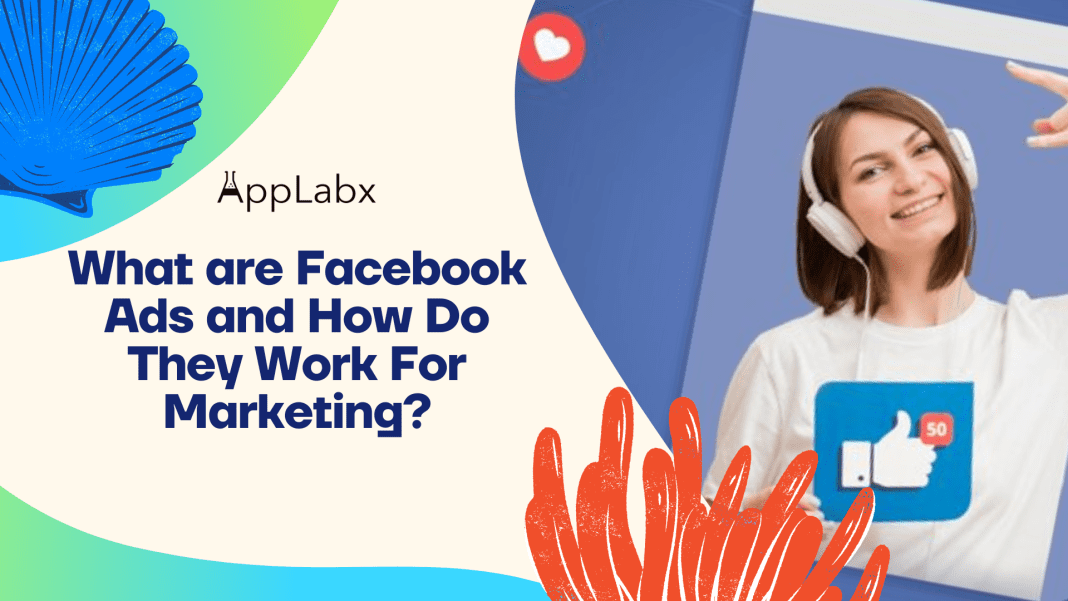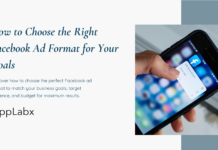Key Takeaways
- Strategic Storytelling: Master the art of crafting compelling narratives through various Facebook ad formats to engage your audience effectively.
- Ad Auction Mastery: Understand the nuances of Facebook’s ad auction system, from strategic bidding to enhancing ad relevance, for successful campaign outcomes.
- Data-Driven Optimization: Embrace iterative refinement by leveraging Facebook Ads Manager, measuring key metrics, and adapting strategies based on real-time insights for continuous campaign improvement.
In the ever-evolving landscape of digital marketing, Facebook Ads stand as titans, reshaping the way businesses connect with their target audiences.
As we dive into the intricacies of Facebook Ads and their profound impact on marketing, it’s essential to comprehend the fundamental definition and significance of this advertising powerhouse.
Whether you’re a seasoned marketer or a business owner exploring new avenues, this comprehensive guide will unravel the mysteries behind Facebook Ads, revealing their potential to propel brands to new heights.
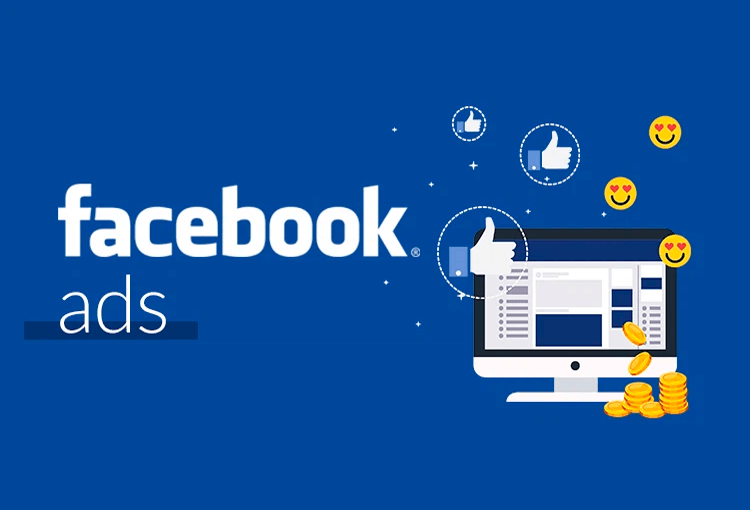
Decoding the Tapestry of Facebook Ad Types
To embark on a journey to master Facebook Ads, one must first navigate through the diverse array of ad types it offers.
From eye-catching image ads to engaging video campaigns and dynamic carousel ads, each format serves a unique purpose.
Unpacking these options becomes crucial for marketers aiming to craft compelling and resonant messages that captivate audiences.
This section will meticulously explore the nuances of each ad type, providing a roadmap for choosing the most effective format tailored to specific marketing goals.
The Science Behind Facebook Ads: Targeting Precision
At the heart of Facebook Ads lies a sophisticated targeting system that empowers marketers to reach their ideal audience with surgical precision.
Demographic targeting, interest targeting, and behavioural targeting form the triumvirate that guides advertisers to the right set of eyeballs.
Delving into the mechanics of these targeting options is essential for understanding how marketers can finely tune their campaigns, ensuring that every ad resonates with the individuals most likely to convert.
Peering into the Facebook Ad Auction System
In the vast digital marketplace, where competition for attention is fierce, Facebook employs an intricate ad auction system to determine which ads appear to users.
Bids, ad relevance, and estimated action rates become the pillars upon which this system stands.
Understanding the dynamics of the auction process is pivotal for marketers aiming to optimize their campaigns and maximize their ROI.
This section will dissect the elements of the ad auction, demystifying the algorithms that govern the visibility and success of Facebook Ads.
Navigating the Landscape of Ad Placement: A Strategic Approach
Beyond the complexities of the auction system, advertisers must strategically choose where their ads will appear.
Desktop or mobile?
News feed or right column?
The decisions made in this realm can significantly impact the reach and engagement of an ad campaign.
This segment will explore the intricacies of ad placement, offering insights into the factors that should influence these critical decisions, ultimately ensuring that ads are presented in the most effective and impactful manner possible.
Initiating a Facebook Ad Campaign: A Step-by-Step Guide
With the foundational knowledge in place, it’s time to roll up our sleeves and embark on the practical journey of setting up a Facebook Ad campaign.
From creating an ad account to defining campaign objectives, setting budgets, and crafting compelling ad creatives, this section serves as a hands-on guide for marketers ready to launch their campaigns on the world’s most influential social media platform.
The nuances of each step will be explored, providing actionable insights for creating campaigns that resonate and deliver results.
Embark on this in-depth exploration as we unravel the intricacies of Facebook Ads and unveil the secrets to leveraging this potent tool in your marketing arsenal.
Stay tuned for an enlightening journey through the realms of ad types, targeting precision, auction dynamics, strategic placements, and the nitty-gritty of campaign setup.
Whether you’re a marketing aficionado or a novice eager to explore the potential of Facebook Ads, this guide is your passport to unlocking unparalleled success in the digital advertising landscape.
But, before we venture further, we like to share who we are and what we do.
About AppLabx
From developing a solid marketing plan to creating compelling content, optimizing for search engines, leveraging social media, and utilizing paid advertising, AppLabx offers a comprehensive suite of digital marketing services designed to drive growth and profitability for your business.
AppLabx is well known for helping companies and startups use Facebook Ads to drive web traffic to their websites and web apps.
At AppLabx, we understand that no two businesses are alike. That’s why we take a personalized approach to every project, working closely with our clients to understand their unique needs and goals, and developing customized strategies to help them achieve success.
If you need a digital consultation, then send in an inquiry here.
What are Facebook Ads and How Do They Work For Marketing?
- Understanding Facebook Ads
- How Facebook Ads Work
- Setting Up a Facebook Ad Campaign
- Measuring Facebook Ad Performance
1. Understanding Facebook Ads

Overview of Facebook Ad Types
Image Ads: Visual Storytelling at its Core
Facebook’s Image Ads are the cornerstone of visual storytelling in the digital age.
With an engaging image, brands can convey a compelling message, capturing the attention of users scrolling through their feeds.
Posts with images on Facebook receive 2.3 times the engagement of those without them.
Example: National Geographic leveraged the power of Image Ads by showcasing breathtaking visuals from their expeditions. This approach not only increased engagement but also aligned with their brand ethos of exploration and awe-inspiring imagery.

Video Ads: Captivating Audiences Through Motion
Marketers can harness the emotive power of videos to tell compelling stories and leave a lasting impact on their audience.
Carousel Ads: Interactive and Dynamic Displays
Carousel Ads enable marketers to showcase multiple images or videos within a single ad unit.
This interactive format is particularly effective for presenting a diverse range of products or highlighting different features of a single product or service.

Slideshow Ads: Lightweight Yet Impactful
Designed for markets with slower internet connections, Slideshow Ads amalgamate images, text, and sound into a lightweight video-like format. This feature not only improves loading times but also ensures that content remains accessible to a wider audience.

Targeting Options: Precision in Reach
Demographic Targeting: Reaching the Right Audience
Facebook’s robust demographic targeting allows advertisers to define their audience based on factors such as age, gender, location, and language.
This granular approach ensures that ads are presented to users who align with the brand’s target demographic.
Example: An e-commerce brand specializing in youth apparel can utilize demographic targeting to showcase trendy clothing to users aged 18-24, maximizing relevance and engagement.

Interest Targeting: Aligning with User Preferences
Interest targeting enables advertisers to connect with users based on their interests, hobbies, and activities on Facebook.
This data-driven approach ensures that ads resonate with individuals who share a genuine affinity for the products or services being promoted.
Example: A fitness brand can target users interested in health and wellness, ensuring that their ads are presented to a receptive audience actively seeking related content.
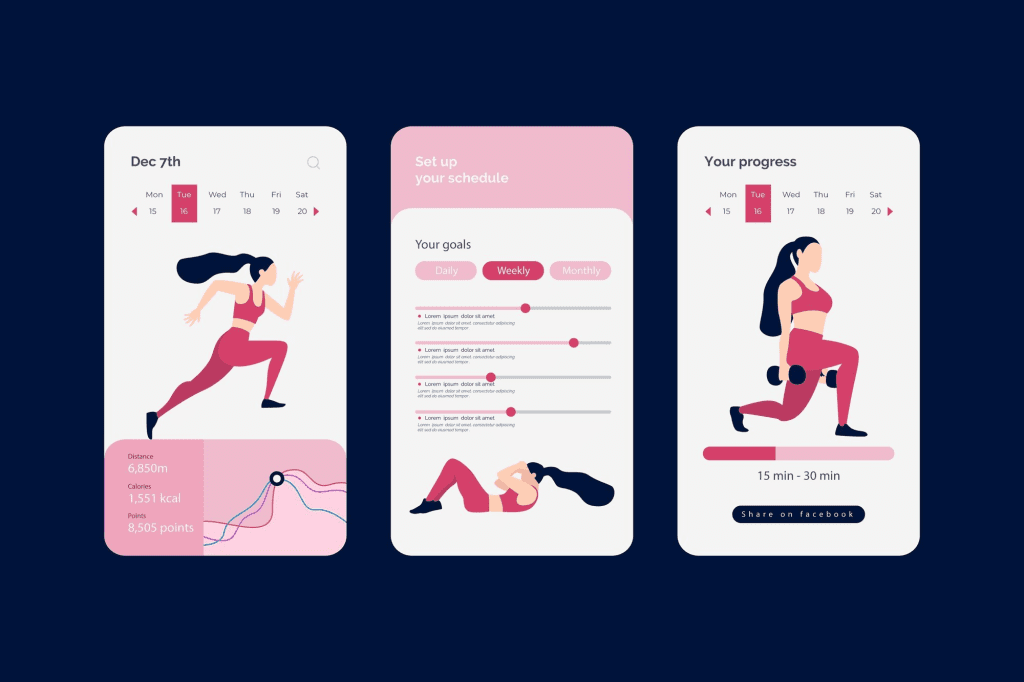
Behavioural Targeting: Predicting User Actions
Facebook allows advertisers to target users based on their past behaviours and interactions on the platform.
From purchasing behaviour to device usage patterns, this information enables marketers to predict and influence user actions.
Example: An online streaming service can target users who have previously shown an interest in similar content or have a history of streaming videos on Facebook, increasing the likelihood of conversion.
Understanding the intricacies of these targeting options empowers marketers to tailor their campaigns for maximum impact, ensuring that their messages reach the most receptive audiences on the platform.
2. How Facebook Ads Work
Understanding the intricacies of how Facebook Ads operate is fundamental for any marketer aiming to harness the platform’s advertising potential.
This comprehensive section explores the mechanics behind Facebook Ads, shedding light on the ad auction system, placement strategies, and the essential elements that dictate the success of a campaign.

Ad Auction System: Bidding for Visibility
Bid Amount: The Currency of the Auction
At the core of Facebook Ads lies the ad auction system, where advertisers bid for the opportunity to showcase their ads to a target audience.
The bid amount represents the maximum sum an advertiser is willing to pay for a desired action, be it a click or an impression.
The competitive nature of the auction ensures that the winning bid is not solely based on monetary value but also considers ad relevance and estimated action rates.
Example: The average cost per click (CPC) for Facebook ads across all industries is $1.72.

Advertisers need to strategically set their bid amounts to ensure cost-effectiveness while remaining competitive within their industry.
Ad Relevance: Quality Over Quantity
Facebook prioritizes user experience, and ad relevance plays a crucial role in the auction system.
The relevance score, ranging from 1 to 10, is determined by user interactions with the ad.
Higher relevance scores lead to lower costs and improved ad placements.
Estimated Action Rates: Anticipating User Engagement
Facebook predicts the likelihood of users taking the desired action when exposed to an ad, be it clicking a link or making a purchase.
Advertisers with higher estimated action rates are favoured in the ad auction, emphasizing the importance of aligning ad content with user intent.
Understanding and optimizing for estimated action rates can significantly impact campaign performance.
Ad Placement: Navigating the Digital Real Estate
Desktop vs. Mobile: Tailoring Experiences
Facebook Ads can appear on both desktop and mobile devices, allowing advertisers to tailor their campaigns for different user experiences.
Understanding user behaviour across these platforms is crucial for optimizing ad placements.
Example: 98.3 per cent of Facebook users use the platform on their mobile devices. Advertisers should prioritize mobile-friendly creatives to effectively reach the majority of the user base.
News Feed vs. Right Column: Striking the Right Balance
The positioning of ads within the user interface also affects their visibility and performance.
While ads in the News Feed seamlessly integrate with organic content, right-column ads offer a more traditional display approach. Striking the right balance between these placements depends on campaign objectives and user engagement patterns.
Advertisers should analyze their goals and audience behaviour to determine the optimal mix of placements.
Best Practices for Facebook Ads: Maximizing Impact
A/B Testing: Iterative Refinement for Success
A/B testing involves comparing two versions of an ad to determine which performs better.
Advertisers can experiment with different visuals, copy, and targeting options to identify the most effective combinations.
Iterative testing is crucial for refining strategies and optimizing campaigns over time.
Ad Design Tips: Enhancing Visual Appeal
The visual components of an ad play a pivotal role in capturing the audience’s attention.
Advertisers should adhere to design best practices, ensuring that visuals are eye-catching, relevant, and aligned with brand aesthetics.
Prioritizing visually appealing creatives enhances the likelihood of user interaction.
Ad Copy Best Practices: Crafting Compelling Narratives
The ad copy serves as the textual narrative that complements visuals.
Clear, concise, and persuasive copywriting is essential for conveying the intended message and prompting user action.
Advertisers should focus on crafting succinct yet impactful copy to maximize user engagement.
Regular Campaign Optimization: Adapting to Evolving Trends
The digital landscape is dynamic, and successful advertisers continually optimize their campaigns based on emerging trends, audience feedback, and platform updates.
Adapting to change is essential for sustained success.
Future Trends in Facebook Advertising: Staying Ahead of the Curve
Emerging Features and Tools: Adapting to Innovation
Facebook consistently introduces new features and tools for advertisers. Staying informed about these updates ensures that marketers can leverage the latest innovations for maximum impact.
Advertisers should explore and adopt Facebook Shops’ features to enhance their campaigns.
Impact of Algorithm Changes: Navigating the Digital Landscape
Facebook’s algorithms evolve over time, influencing how content is prioritized and displayed. Advertisers must stay attuned to algorithmic changes to optimize their strategies accordingly.
Example: Facebook’s emphasis on meaningful social interactions led to a decline in organic reach for brand content, necessitating a shift toward more engaging and user-centric ad strategies.
Integrating Facebook Ads with Other Marketing Channels: Holistic Approaches
As part of a comprehensive marketing strategy, integrating Facebook Ads with other channels such as email marketing and influencer collaborations can amplify reach and impact.
Cross-channel integration enhances overall campaign effectiveness.
3. Setting Up a Facebook Ad Campaign
Crafting a successful Facebook Ad campaign involves a meticulous setup process that considers various elements, from creating an ad account to defining campaign objectives and optimizing ad creatives.
In this detailed guide, we will explore each step in setting up a Facebook Ad campaign, providing insights, best practices, and real-world examples to guide advertisers on their journey.

Creating a Facebook Ad Account: The Foundation of Campaigns
Account Creation Process: A Step-by-Step Guide
Setting up a Facebook Ad campaign begins with the creation of a dedicated ad account. This foundational step involves providing essential business information, selecting an account currency, and configuring billing details.
Example: The official Business Help Center provides a comprehensive step-by-step guide on creating a Facebook ad account, ensuring advertisers can navigate the setup process seamlessly.
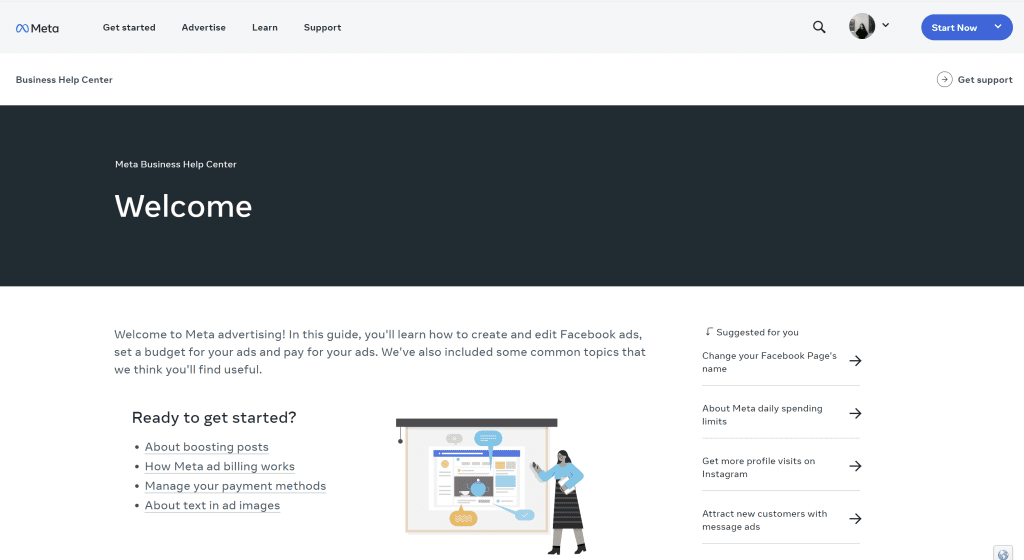
Business Verification: Establishing Trust and Credibility
Verifying the business details within the Facebook Ad account not only instils trust but also unlocks additional features such as the ability to run ads related to sensitive topics.
Example: Brands like Airbnb go through the business verification process to showcase legitimacy. This not only boosts credibility but also ensures compliance with Facebook’s advertising policies.
Defining Campaign Objectives: Aligning with Business Goals
Objective Selection: Tailoring Campaigns to Goals
Before launching a campaign, advertisers must define clear objectives, and align with specific business goals. Facebook’s Ad Manager provides a range of predefined objectives, including awareness, consideration, and conversion.
Example: An e-commerce brand aiming to increase online sales can select the “Conversions” objective, optimizing the campaign for actions such as purchases, sign-ups, or other specified conversions.
SMART Goal Setting: Ensuring Clarity and Success
Adhering to the SMART criteria (Specific, Measurable, Achievable, Relevant, Time-Bound) when setting campaign objectives ensures clarity and measurability, contributing to the overall success of the campaign.
Example: Marketers who set goals are 376% more likely to report success than those who don’t. Clearly defined goals contribute to campaign effectiveness.
Ad Budget and Schedule: Optimizing Resource Allocation
Budget Allocation: Balancing Spend and Reach
Determining the ad budget is a critical aspect of campaign setup. Advertisers can choose between a daily budget, specifying the maximum to spend each day, or a lifetime budget for the entire campaign duration.
Schedule Configuration: Timing for Optimal Impact
Setting the campaign schedule involves specifying the start and end dates. Advertisers can choose to run ads continuously or set specific time frames based on audience behaviour and peak engagement periods.
Example: A restaurant planning a weekend promotion may choose to schedule ads specifically on Fridays and Saturdays to capture the attention of potential customers planning weekend dining.
Ad Creatives and Copywriting: Crafting Compelling Messages
Visual Elements: Capturing Attention with Creatives
The visual components of an ad, including images or videos, play a pivotal role in capturing the audience’s attention.
Advertisers should adhere to design best practices, ensuring visuals are eye-catching and aligned with brand aesthetics.
Incorporating compelling visuals enhances user engagement.
Copywriting Excellence: Conveying Messages Effectively
The ad copy serves as the textual narrative that complements visuals.
Clear, concise, and persuasive copywriting is essential for conveying the intended message and prompting user action.
Crafting impactful copy is crucial for driving user interaction.
A/B Testing: Iterative Refinement for Success
Testing Variables: Experimenting for Optimal Performance
A/B testing involves comparing two versions of an ad to determine which performs better. Advertisers can experiment with different visuals, copy, and targeting options to identify the most effective combinations.
Iterative Optimization: Continuous Improvement Strategies
A/B testing is an ongoing process that allows advertisers to iteratively refine their strategies based on real-time data and user responses, ensuring constant optimization for better performance.
Example: An e-commerce brand might A/B test different product images, headlines, or CTAs, iterating on successful elements to continually improve campaign effectiveness.
Ad Placement Strategies: Navigating the Digital Real Estate
Desktop vs. Mobile: Tailoring Experiences
Considering user behaviour across desktop and mobile devices is crucial for optimizing ad placements. Advertisers should tailor creatives to offer seamless and engaging experiences on both platforms.
News Feed vs. Right Column: Strategic Considerations
The positioning of ads within the user interface also affects their visibility and performance. Advertisers should strike the right balance between News Feed and right column placements based on campaign objectives and user engagement patterns.
4. Measuring Facebook Ad Performance
Effectively measuring the performance of Facebook Ads is a critical aspect of any advertising strategy.
This comprehensive guide explores the key metrics, analytical tools, and best practices for evaluating the success of Facebook Ad campaigns.
From understanding core metrics to leveraging advanced analytics, advertisers can gain actionable insights to optimize their campaigns and achieve their marketing objectives.

Key Metrics to Track: Navigating the Analytics Landscape
Click-Through Rate (CTR): Gauging User Engagement
CTR is a fundamental metric that measures the percentage of people who click on an ad after seeing it. A high CTR indicates that the ad resonates with the audience and encourages interaction.
Example: The average click-through rate on Facebook across all industries is 0.89%. Advertisers should aim to surpass industry benchmarks to ensure effective engagement.
Conversion Rate: Evaluating Actionable Results
The conversion rate tracks the percentage of users who completed a desired action, such as making a purchase or filling out a form, after clicking on an ad. It is a crucial metric for assessing the effectiveness of a campaign in driving desired outcomes.
Advertisers should continually optimize campaigns to maximize conversion rates.
Cost per Click (CPC): Assessing Budget Efficiency
CPC measures the cost incurred by advertisers for each click on their ad. Monitoring CPC is vital for managing budget allocations and ensuring cost-effective campaigns.
Advertisers should strive to maintain a balance between CPC and desired campaign outcomes.
Return on Ad Spend (ROAS): Evaluating Campaign Profitability
ROAS measures the revenue generated for every dollar spent on advertising. Advertisers aim to achieve a positive ROAS, indicating that the campaign is generating more revenue than the advertising costs.
Facebook Ads Manager Overview: Harnessing Analytical Tools
Dashboard Navigation: Insights at Your Fingertips
Facebook Ads Manager serves as the central hub for campaign management and analytics. Advertisers can utilize its features to monitor performance, make data-driven decisions, and optimize campaigns.
Example: The Ads Manager dashboard provides a snapshot of key metrics, ad spend, and engagement levels. Advertisers can customize the view to focus on specific performance indicators.
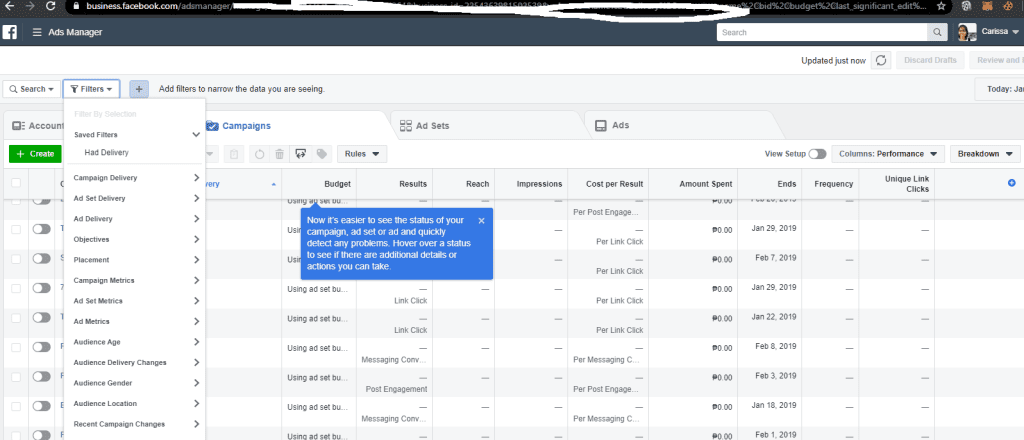
Custom Reporting: Tailoring Insights to Needs
Custom reporting in Facebook Ads Manager allows advertisers to create tailored reports based on specific metrics and timeframes.
This feature facilitates in-depth analysis and reporting aligned with unique campaign goals.
Example: Advertisers can generate custom reports to analyze the performance of different ad sets, creative variations, or demographic segments, gaining granular insights into what resonates with their audience.
Attribution Models: Understanding User Journey Impact
Last-Click Attribution: Analyzing Direct Conversions
Last-click attribution assigns full credit for a conversion to the last click a user made before converting. While it provides clear insights into direct conversion sources, it may not capture the entire user journey.
Example: Last-click attribution would attribute a purchase solely to the last ad clicked by the user, overlooking the role of previous touchpoints in influencing the decision.
Multi-Touch Attribution: Acknowledging Multiple Touchpoints
Multi-touch attribution models consider the entire user journey, giving credit to multiple touchpoints that contribute to a conversion. This approach provides a more holistic view of the customer’s interaction with ads.
Example: A user might initially discover a product through a video ad, engage with a carousel ad for more details, and then convert after seeing a retargeting ad. Multi-touch attribution recognizes the impact of each touchpoint.
Ad Performance Diagnostics: Identifying Opportunities
Ad Relevance Diagnostics: Improving Engagement Quality
Facebook provides a Relevance Score that assesses the quality and relevance of an ad to the target audience. Advertisers should leverage this diagnostic tool to refine their creative elements and boost engagement.
Advertisers should aim for high relevance scores to enhance ad performance.
Frequency Monitoring: Preventing Ad Fatigue
Frequency measures how often an ad is shown to the same user. The high frequency may lead to ad fatigue, reducing effectiveness. Monitoring frequency helps advertisers adjust their targeting and creative strategies to maintain engagement.
Example: Advertisers can use Facebook’s frequency metric to identify when an ad has reached saturation with a particular audience and needs refreshing to maintain impact.
Split Testing: Validating Strategies Through Experimentation
Testing Variables: Iterative Refinement for Success
Split testing, or A/B testing, involves comparing two versions of an ad to determine which performs better. Advertisers can experiment with different visuals, copy, and targeting options to identify the most effective combinations.
Example: Advertisers can conduct split tests to compare the performance of two different ad creatives, allowing them to refine their strategies based on data-driven insights.
Iterative Optimization: Continuous Improvement Strategies
Split testing is an ongoing process that allows advertisers to iteratively refine their strategies based on real-time data and user responses, ensuring constant optimization for better performance.
Example: A clothing retailer might conduct split tests to compare the effectiveness of different promotional offers, helping them tailor future campaigns for maximum impact.
Reporting and Analysis Best Practices: Driving Actionable Insights
Regular Reporting: Monitoring Trends and Patterns
Regularly scheduled reporting allows advertisers to track campaign performance over time, identifying trends and patterns. This practice facilitates timely adjustments and ensures campaigns remain aligned with goals.
Example: Advertisers can set up weekly or monthly reports to analyze key metrics, budget allocations, and audience engagement, enabling proactive campaign optimization.
Data-Driven Decision-Making: Aligning Strategies with Insights
Adopting a data-driven approach involves making decisions based on analytical insights rather than assumptions. Advertisers should continually analyze performance data to inform strategic adjustments.
Example: If the analysis reveals that a specific audience segment has a consistently high conversion rate, advertisers can allocate more budget to target that segment, maximizing return on investment.
Conclusion
In the ever-evolving landscape of digital marketing, understanding and harnessing the capabilities of Facebook Ads is a strategic imperative for businesses seeking to thrive in the online realm.
As we conclude our in-depth exploration of “What are Facebook Ads and How Do They Work for Marketing?” it becomes evident that these advertising tools offer a dynamic and influential platform for businesses to connect with their target audiences, drive engagement, and achieve tangible business outcomes.
Mastering the Art of Facebook Advertising
Facebook Ads, with their versatile ad formats and expansive user base, empower advertisers to craft compelling narratives and visually appealing content.
From engaging carousel ads that tell a story to immersive video ads that captivate audiences, the creative possibilities are vast.
The art of Facebook advertising lies in not just reaching users but in creating experiences that resonate, fostering brand loyalty and customer connections.
Decoding the Ad Auction System
Central to the success of any Facebook Ad campaign is the ad auction system, where advertisers bid for the attention of their desired audience.
Understanding the nuances of bid amounts, ad relevance, and estimated action rates is akin to mastering the chessboard of digital advertising.
Strategic bidding, coupled with a focus on creating highly relevant and engaging content, positions advertisers for success in the competitive landscape of the ad auction.
Navigating Digital Real Estate: Placements Matter
The digital real estate offered by Facebook is extensive, and knowing how to strategically place ads is crucial. Whether appearing seamlessly in users’ News Feeds or occupying the right column, the placement of ads can significantly impact visibility and engagement.
Advertisers must tailor their strategies based on user behaviour across desktop and mobile platforms, ensuring a seamless and user-friendly experience.
Setting the Stage for Success: A Strategic Blueprint
Initiating a Facebook Ad campaign involves a strategic blueprint that encompasses creating an ad account, defining clear objectives, optimizing budgets, and crafting compelling creatives.
With examples ranging from the meticulous account setup process to the importance of SMART goal setting, advertisers can navigate each step with confidence, laying the foundation for impactful and goal-oriented campaigns.
Measuring Success: Metrics, Analytics, and Iterative Refinement
The journey doesn’t end with the launch of a Facebook Ad campaign; in fact, it’s just the beginning.
The ability to measure and analyze performance metrics such as click-through rates, conversion rates, and return on ad spend is paramount.
Armed with tools like Facebook Ads Manager, advertisers gain valuable insights into the effectiveness of their campaigns, enabling data-driven decision-making.
Iterative Refinement and the Pursuit of Excellence
A/B testing, split testing, and constant optimization are the hallmarks of successful advertisers.
Advertisers must remain agile, adapting to emerging trends, user feedback, and platform updates to stay ahead of the curve.
Looking Ahead: Future Trends and Holistic Approaches
As we peer into the future of Facebook advertising, it’s clear that staying ahead of the curve requires a keen eye on emerging features, algorithm changes, and integration with other marketing channels.
From the introduction of Facebook Shops to the impact of algorithmic shifts, advertisers who embrace innovation and holistic approaches are poised to thrive in the evolving digital landscape.
In conclusion, Facebook Ads represent more than just a marketing tool; they embody a dynamic ecosystem where creativity, strategy, and data-driven insights converge.
Whether you’re a seasoned advertiser or embarking on your first campaign, the keys to success lie in understanding the nuances of the platform, staying attuned to industry trends, and embracing the iterative nature of digital marketing.
As you navigate the world of Facebook Ads, may your campaigns be impactful, your insights profound, and your journey toward marketing excellence ever-evolving. Happy advertising.
If you are looking for a top-class digital marketer, then book a free consultation slot here.
If you find this article useful, why not share it with your friends and business partners, and also leave a nice comment below?
We, at the AppLabx Research Team, strive to bring the latest and most meaningful data, guides, and statistics to your doorstep.
To get access to top-quality guides, click over to the AppLabx Blog.
People also ask
What are Facebook ads and how do they work?
Facebook Ads are a form of online advertising on the social media platform, Facebook. They work through an auction system where advertisers bid to display their ads to a targeted audience. Ad placements can appear in users’ News Feeds, Stories, or on the right column. Ad content and targeting are crucial for effective engagement and achieving marketing objectives.
How does Facebook work in marketing?
Facebook revolutionizes marketing by offering targeted advertising through its Ads platform. Advertisers can reach specific demographics, utilize diverse ad formats, and employ precise analytics. With extensive user data, businesses can create personalized campaigns, enhancing brand visibility and driving engagement.
How do Facebook ads work step by step?
- Ad Account Creation: Begin by setting up a Facebook Ad account.
- Objective Selection: Define campaign goals – awareness, consideration, or conversion.
- Audience Targeting: Specify the audience based on demographics, interests, and behavior.
- Budgeting: Set daily or lifetime budgets.
- Ad Creation: Craft engaging visuals and copy.
- Placement: Choose where ads appear (News Feed, Stories).
- Launch & Monitor: Activate the campaign and monitor performance through Facebook Ads Manager.
- Optimization: Analyze data and refine strategies for ongoing success.


























